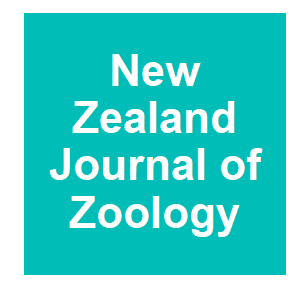
Keywords: emerging technologies

|
Gene drives – maybe not a silver bullet, but a bullet nonethelessJenny Leonard, New Zealand's Biological Heritage, 2023.
A gene drive is both a natural process and a genetic engineering technology where a gene is promoted or favoured during reproduction—instead of there being a “chance” of an offspring inheriting a gene, gene drives almost guarantee that the offspring (and subsequent ... Keywords: animals, biology, climate-change, emerging technologies, Environmental Sciences & Ecology, eradications, Evolutionary Biology, framework, Gene drive, gene drive opinion, gene drive synthetic, Genetics &, Heredity, horizon scan, impacts, islands, malaria, plants |

|
Earth system interventions as technologies of the AnthropoceneJ. L. Reynolds, Environmental Innovation and Societal Transitions, 40:132-146. 2021.
Earth system interventions (ESIs)—intentional large-scale interventions in Earth systems—are not entirely new. However, in response to threats to sustainability, particularly from climate change and biodiversity loss, some scientists and others are researching, developing, ... Keywords: animals, biology, climate-change, emerging technologies, Environmental Sciences & Ecology, eradications, Evolutionary Biology, framework, Gene drive, gene drive opinion, gene drive synthetic, Genetics &, Heredity, horizon scan, impacts, islands, malaria, plants |

|
Translating gene drive science to promote linguistic diversity in community and stakeholder engagementC. Cheung, S. Gamez, R. Carballar-Lejarazú, V. Ferman, V. N. Vásquez, G. Terradas, J. Ishikawa, C. E. Schairer, E. Bier, J. M. Marshall, A. A. James, O. S. Akbari and C. S. Bloss, Global Public Health, 2020.
Information about genetic engineering (GE) for vector control in the United States is disseminated primarily in English, though non-English speakers are equally, and in some geographic regions even more affected by such technologies. Non-English-speaking publics should have equal ... Keywords: animals, biology, climate-change, emerging technologies, Environmental Sciences & Ecology, eradications, Evolutionary Biology, framework, Gene drive, gene drive opinion, gene drive synthetic, Genetics &, Heredity, horizon scan, impacts, islands, malaria, plants |

|
Trends in the development of mammalian pest control technology in New ZealandC. T. Eason, L. Shapiro, S. Ogilvie, C. King and M. Clout, New Zealand Journal of Zoology, 44:267-304. 2017.
The use of new toxins with advantages in specific settings should be complemented by improvements in resetting trap technology, barrier approaches, and novel biocontrol and genetic concepts. Sodium fluoroacetate (1080) and other important tools have been retained; we have the ... Keywords: animals, biology, climate-change, emerging technologies, Environmental Sciences & Ecology, eradications, Evolutionary Biology, framework, Gene drive, gene drive opinion, gene drive synthetic, Genetics &, Heredity, horizon scan, impacts, islands, malaria, plants |

|
Is it time for synthetic biodiversity conservation?Piaggio, AJS, G.; Seddon, P. J.; Alphey, L.; Bennett, E. L.; Carlson, R. H.; Friedman, R. M.; Kanavy, D.; Phelan, R.; Redford, K. H.; Rosales, M.; Slobodian, L.; Wheeler, K., Trends in Ecology & Evolution, 32:97-107. 2017.
Evidence indicates that, despite some critical successes, current conservation approaches are not slowing the overall rate of biodiversity loss. The field of synthetic biology, which is capable of altering natural genomes with extremely precise editing, might offer the potential ... Keywords: animals, biology, climate-change, emerging technologies, Environmental Sciences & Ecology, eradications, Evolutionary Biology, framework, Gene drive, gene drive opinion, gene drive synthetic, Genetics &, Heredity, horizon scan, impacts, islands, malaria, plants |

Contact
David O’Brochta
Foundation for the
National Institutes of Health
geneconvenevi@fnih.org
RSS

